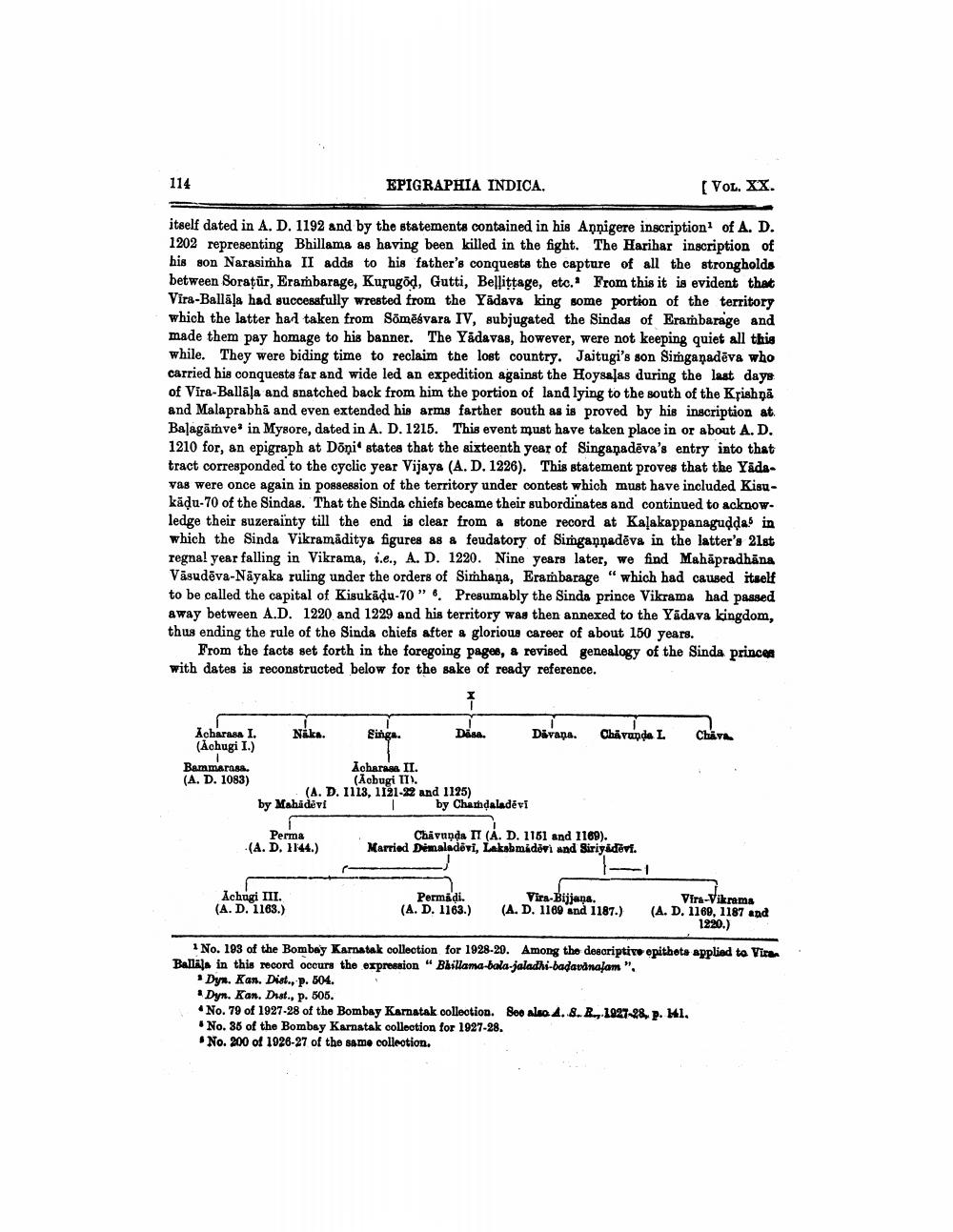________________
114
EPIGRAPHIA INDICA.
(Vol. XX.
itself dated in A. D. 1192 and by the statements contained in his Annigere inscription of A. D. 1202 representing Bhillama as having been killed in the fight. The Harihar inscription of his son Narasimha II adds to his father's conquesta the capture of all the strongholds between Soratūr, Erambarage, Kurugod, Gutti, Bellittage, etc. From this it is evident that Vira-Ballāļa had successfully wrested from the Yādava king some portion of the territory which the latter had taken from Sămēsvara IV, subjugated the Sindas of Erambarage and made them pay homage to his banner. The Yådavas, however, were not keeping quiet all this while. They were biding time to reclaim the lost country. Jaitugi's son Simgañadēva who carried his conquesta far and wide led an expedition against the Hoysalas during the last daye of Vira-Ballāļa and snatched back from him the portion of land lying to the south of the Krishņā and Malaprabhā and even extended his arms farther south as is proved by his inscription at Balagāmve in Mysore, dated in A. D. 1215. This event must have taken place in or about A.D. 1210 for, an epigraph at Dönit states that the sixteenth year of Singanadēva's entry into that tract corresponded to the cyclic year Vijaya (A.D. 1226). This statement proves that the Yadavas were once again in possession of the territory under contest which must have included Kisukādu-70 of the Sindas. That the Sinda chiefs became their subordinates and continued to acknowledge their suzerainty till the end is clear from a stone record at Kalakappanaguddas in which the Sinda Vikramaditya figures as & feudatory of Simgannadēva in the latter's 21st regna! year falling in Vikrama, i.e., A. D. 1220. Nine years later, we find Mahāpradhana Väsudēva-Nayaka ruling under the orders of Simhana, Erambarage " which had caused itself to be called the capital of Kisukādu-70” 8. Presumably the Sinda prince Vikrama had passed away between A.D. 1220 and 1229 and his territory was then annexed to the Yādava kingdom, thus ending the rule of the Sinda chiefs after a glorious career of about 150 years.
From the facts set forth in the foregoing pages, & revised genealogy of the Sinda princes with dates is reconstructed below for the sake of ready reference.
Dätapa.
Chävande L
Chára
Acharasa I. Naka.
Désa. (#chugi I.) Bammarosa.
Acharase II. (A. D. 1083)
(Acbugi II). (A.D. 1113, 1121-22 and 1125) by Mahidevi
by Chandaladevi
Perma (A.D. 1144.)
Chavanda II (A. D. 1151 and 1189). Married Demaladovi, Lakshmidori and Siriyadevi.
Achagi III. (A.D. 1163.)
Permadi. (A. D. 1163.)
Virs Bijjana. (A.D. 1169 and 1187.)
Vira-Vikrams (A.D. 1169, 1187 and
1220.)
* No. 193 of the Bombay Kamatak collection for 1928-20. Among the descriptivo epitheta applied to Vira BADAin this record occurs the expression “ Baillama-bola-jaladhi-badaudnalam".
• Dyn. Kan. Dist., p. 504.
Dyn. Kan. Dist., p. 505. No. 79 of 1927-28 of the Bombay Karnatak collection. 8oo also 4. 8. 2., 1927-28. p. HI. No. 36 of the Bombay Karnatak collection for 1927-28. No. 200 of 1926-27 of the same collection.




